When you try a new form of exercise, you likely invest in clothing, shoes and equipment. However, when you’re a beginner in yoga classes — also known as a yoga practice — you’ll need certain props and accessories that are exclusive to this discipline. This article explains what they are and how you use them.
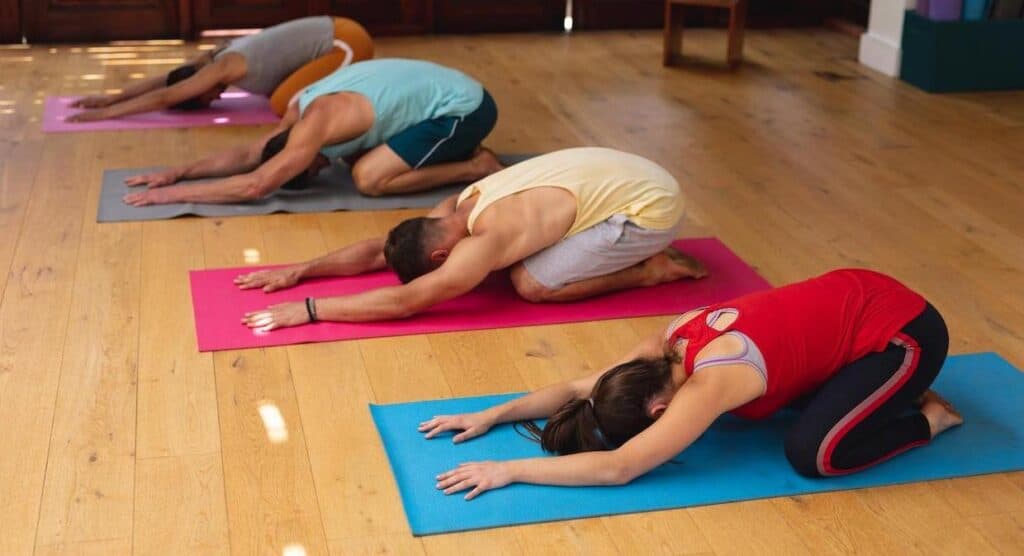
This post may contain affiliate link(s). As an Amazon Associate, I earn from qualifying purchases. See Disclosures.
Yoga for beginners
Yoga has been around for thousands of years. It began in India as a physical, mental and spiritual practice. Fast forward to today, and many people who practice yoga still enjoy the benefits of its mind-body connection.
For instance, if you’re looking for ways to simplify your life to minimize your stress, yoga can help. That’s because practicing yoga requires intense focus away from everyday concerns, which many find restorative.
Yoga practice at home
For newbies wanting to practice yoga at home, standing yoga or chair yoga is a terrific start. With standing or chair yoga, you don’t need any props at all — just your two feet or, as obvious with chair yoga’s name, a chair. An online teacher will take you through a series of moves, called poses, that mimic a traditional yoga class.
Fitness apps like Peloton offer standing and chair yoga along with traditional yoga classes. Start with the Peloton Yoga Basics library, which demonstrates how to do fundamental yoga poses.
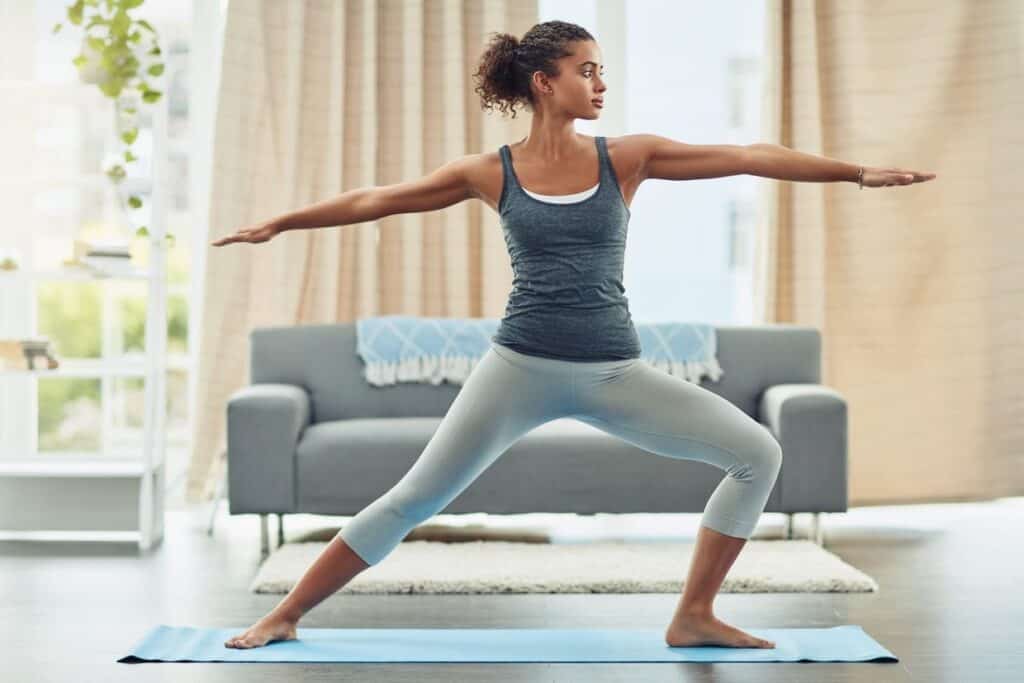
Yoga accessories explained
When you decide to practice traditional yoga — yoga done on the floor versus standing up or sitting on a chair — there are some basic props you need. “Beginning yoga practitioners can get a good start with just a yoga mat and two blocks,” said Jennifer Osborn of Kitchen Serf, who has been practicing yoga for 15 years. However, you may find it helpful to have these additional yoga accessories:
- Bolster
- Strap
- Blanket
Here are explanations of how each will make your beginning yoga practice more enjoyable. Also, you’ll find alternatives if your budget won’t allow you to buy every prop mentioned.
Yoga mat
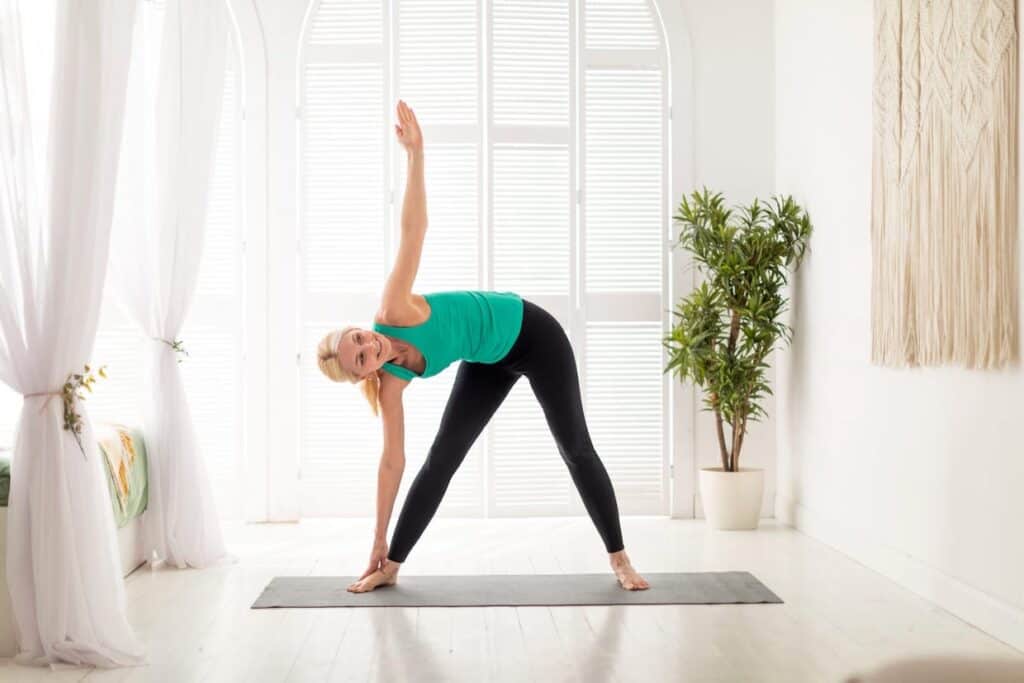
If you’ve ever gone camping, then you may have packed a soft mat to put under your sleeping bag. Unfortunately, this kind of mat doesn’t work for yoga so you’ll need to buy something new.
“When you use a thick mat with foam in it, it makes you have to work harder doing yoga,” explained Kim Trimmer, owner of InsideOut Yoga studio in Seattle, Washington. You want your hands and feet on a steady, secure surface. Note: you do yoga barefoot. A squishy mat may be soft but it’s neither steady nor secure.
A yoga mat is there to keep your feet from slipping when you’re in a pose. So, you want it to have some stickiness or grip to it. Also, a mat can provide some cushioning but not too much. You want to be able to feel the floor underneath. Manduka yoga mats, which Trimmer said are top of the line, have mats with varying levels of thickness. This includes:
- 3 mm
- 4 mm
- 6 mm
Another benefit to Manduka? The PRO lines of Manduka yoga mats come with a lifetime guarantee. This includes the Manduka PRO yoga mat and PROlite yoga mat.
Yoga blocks
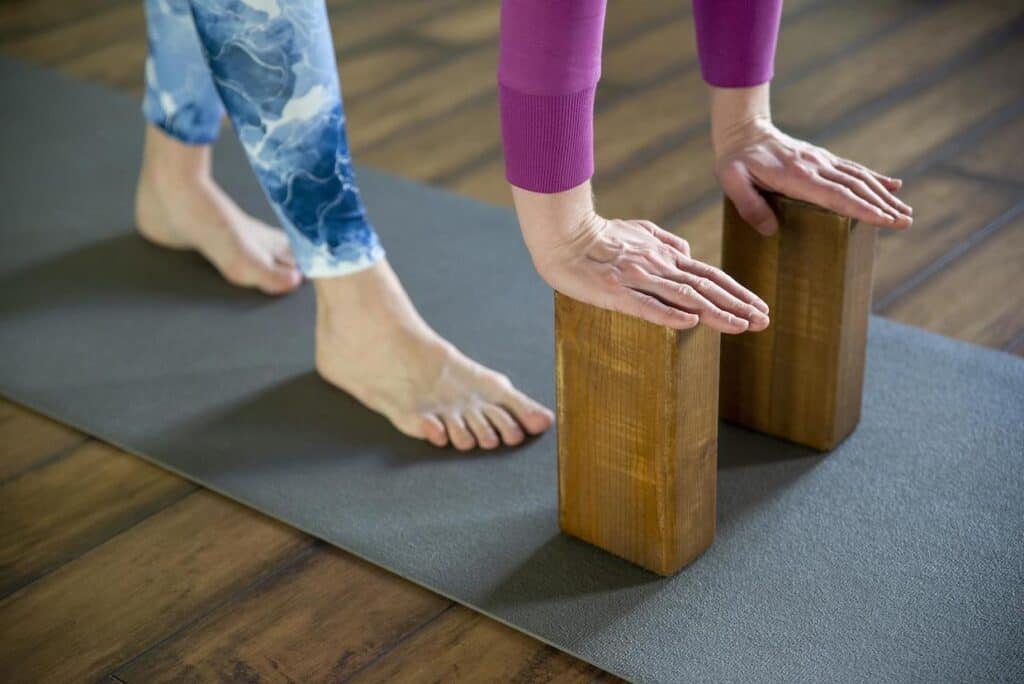
Yoga blocks serve multiple purposes. For starters, if you have trouble reaching the floor when bending over, the blocks act like a lift for your hands. That is, they bring the ground up to you.
Typically, blocks are rectangular, measure 9 inches by 6 inches, and have a low, medium and tall position — horizontally on the ground, up on its side or vertically, respectively. So, as you progress from beginner to a more advanced practice or you become more flexible, you can go from needing the block in the tall position to something lower.
Also, blocks can help with balance. “In many poses a hand on the block provides stability for the student where otherwise they may have felt unsteady,” said Heather Carroll, owner of A Balanced Life Training in Wakefield, Massachusetts. She explained that you can also sit on a yoga block if you have tight hips or use it for support when lying on the ground during class.
The most common materials for yoga blocks are foam and cork. Brands like Gaiam, Alo Yoga and Manduka make blocks.
What really matters with a yoga block for beginners, though, isn’t so much the make or the material but the block’s dimensions. Look for a rectangular block — in the typical dimensions of 6 inches by 9 inches — but with a thickness of 4 inches versus 3 inches. That 1 inch really can make a difference in your balance. Added Trimmer, “The thinner blocks tend to topple.”
Yoga bolster and blanket
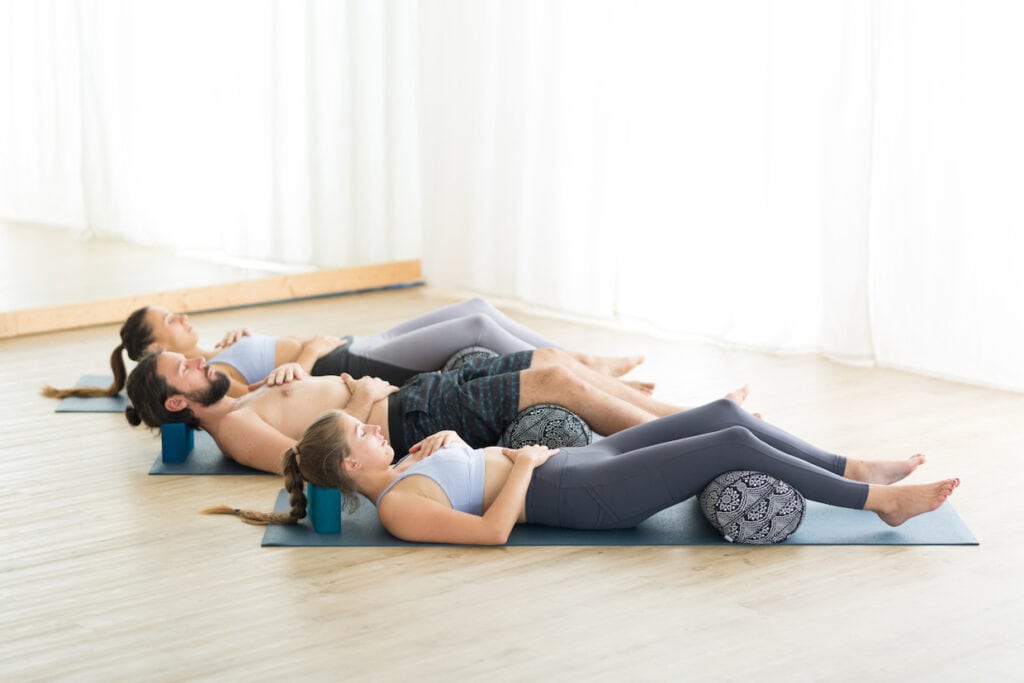
Both the yoga bolster and blanket are designed to support your body in certain poses. “Bolsters are used a lot in restorative poses as a soft cushion to make students comfortable staying still and resting in a pose for a longer time,” said Carroll. “Blankets are in between bolsters and blocks. They are soft and can be rolled to assist or to make them comfortable.”
Truth is, if you invest in a yoga blanket when you’re beginning to practice yoga, you may not need to spend money on a bolster. You can roll up the blanket and use it like a bolster when the class calls for one. Sometimes these yoga blankets are called Mexican blankets. Why? Because they often feature the striped design of traditionally woven textiles from Mexico.
Yoga strap
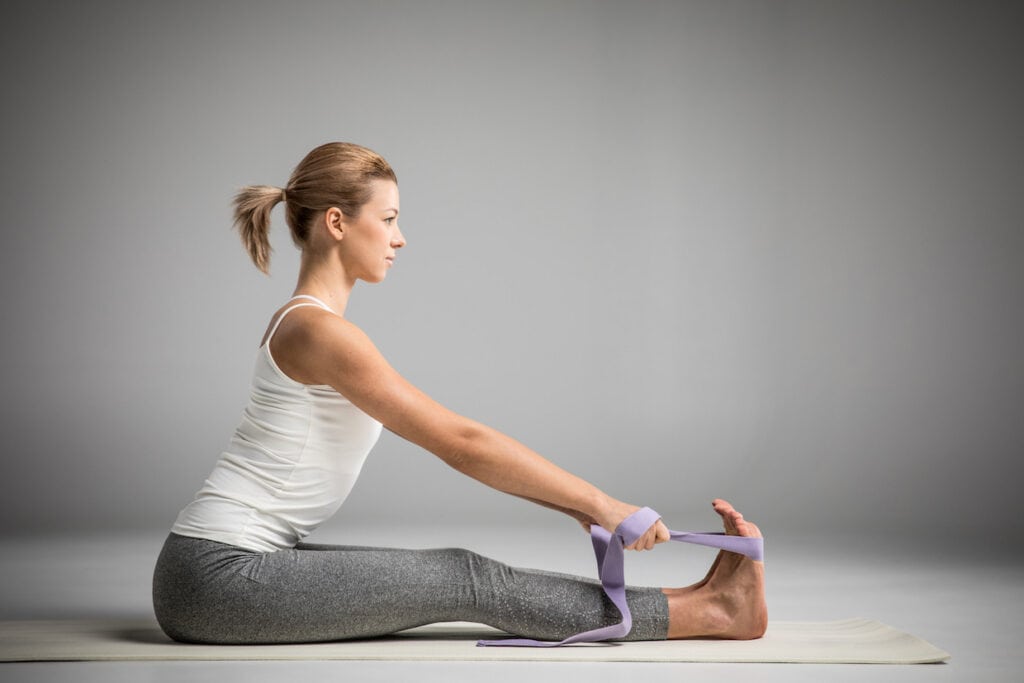
Like blocks, a yoga strap can help a beginner who lacks flexibility reach a pose they might not be able to get into on their own. So, for example, if you’re doing a seated forward fold, you can put the strap around the soles of your feet and hold it in your hands, as you bend forward, to mimic reaching your toes.
Some yoga poses have your hands and arms behind you. If you have tight shoulders, you may have a hard time getting into those positions. Again, by gripping a yoga strap, you can make it easier on yourself.
Finally, if you can’t afford a yoga strap, you have options. Trimmer said you can use a makeshift strap. She recommends a belt from a bathrobe or an old necktie.
Final thoughts on yoga accessories for beginners
If all of this feels overwhelming, you can always try out a local yoga studio. Many offer classes for beginners. All you need to do is bring your own yoga mat. Then, they’ll provide the rest of the props and accessories you need for class.
Leah Ingram is the author of 15 books, including “Suddenly Frugal: How to Live Happier and Healthier for Less” and “The Complete Guide to Paying for College.” She shares shopping advice on fitness topics, including Peloton yoga, on her blog called PeloZone.